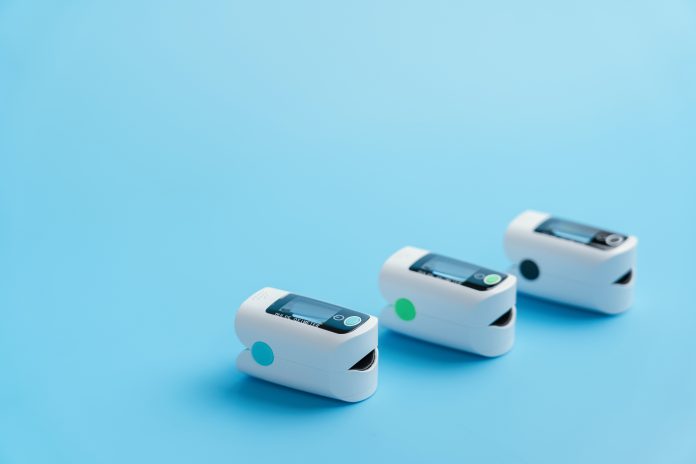The device used to assess COVID severity via blood oxygen levels can be significantly less effective on certain skin colours
The study shows that the pulse oximeters gave false readings of nearly 7% higher in a group of patients of Mixed ethnicity with COVID-19, compared to white patients at just over 3%. There were also false high readings in patients with both Black and Asian ethnicity, which could delay patients receiving the best and most timely treatment for the virus.
What is a pulse oximeter?
The findings of the research, published in the European Respiratory Journal, show the positives and negatives of pulse oximeters. The device is a non-invasive way to measure the oxygen saturation level of the blood and can detect even small changes in oxygen levels.
Pulse oximeters show how effective blood is carrying oxygen to the extremities furthest from the heart, including the arms and legs. Medical professionals routinely use them in primary care and critical care settings like emergency rooms or hospitals to monitor the clinical status of their patients.
How does a pulse oximeter work?
The device uses light wave transmission in order to calculate the blood oxygen level of each patient. However, this technology is modified by skin pigmentation and can then vary due to skin colour.
In 2021, a previous study reported different outputs in patients with Black skin compared to patients with white skin – which has the potential to create an even greater racial disparity in COVID outcomes.
This previous study led to the FDA release an expression of concern surrounding the accuracy of pulse oximeters in 2021 which resulted in the publication of this University of Nottingham study.
How did the team find this link?
Delivered by a consortium of multidisciplinary teams from the University of Nottingham and Nottingham University Hospitals NHS Trust, this study made use of the electronic datasets that are collected for clinical use in real time.
The Nottingham experts used data from patients with COVID-19 to look at the difference on blood oxygen levels as measured by pulse oximetry and arterial blood gas tests, spilt into different ethnic groups over a wide range of oxygen saturations.
Arterial blood gas tests measure the levels of oxygen in the blood from an artery and represent the gold standard measurement for oxygen levels.
The team used electronic data for patients admitted to Nottingham University Hospitals NHS Trust between February 2020 and September 2021 with Covid-19 infection. The pulse oximetry measurements and blood gas measurement within a half an hour window were compared.
Mixed ethnicity group reading was nearly 7% higher
There were differences in oxygen saturations (amounts of oxygen in the blood), between the pulse oximetry arterial blood gas readings in all groups.
The highest difference was in the Mixed ethnicity group which was nearly 7% higher in the oximetry reading, with the lowest in the white group at 3.2% higher than the true measurement from arterial blood gases. A reading of 5.4% higher using pulse oximetry was found in the Black group of participants and 5.1% higher in the Asian population.
The Nottingham authors said: “The difference between the readings also increased in the clinically important range of 85 to 89%, when many clinical decisions are made. Mean values as measured by pulse oximeter were higher than reality in individuals with a recorded Black and Asian ethnicity, compared to those of a White ethnicity.”
“Patients with darker skin” get less accurate oxygen measurements
High levels of skin pigmentation are associated with ethnic groups who have a poorer outcome from COVID infection. This means these groups need the most accurate oxygen measurements available, to deliver appropriate and timely treatment.
This data is then highlighting a vital gap in healthcare that is putting different ethnic groups at increased risk.
Dr Andrew Fogarty, from the School of Medicine at the University and the lead author of the study, said: “This data builds on what we know, which is that patients with darker skin have less accurate oxygen measurements using the pulse oximeters. Any error of measurement of oxygen levels will make assessing the severity of Covid-19 infection more difficult, and may delay delivery of timely medical care.
“We are now exploring the impact of this on clinical outcomes to see if it may have led to any issues in escalating treatment intensity for our patients.”











